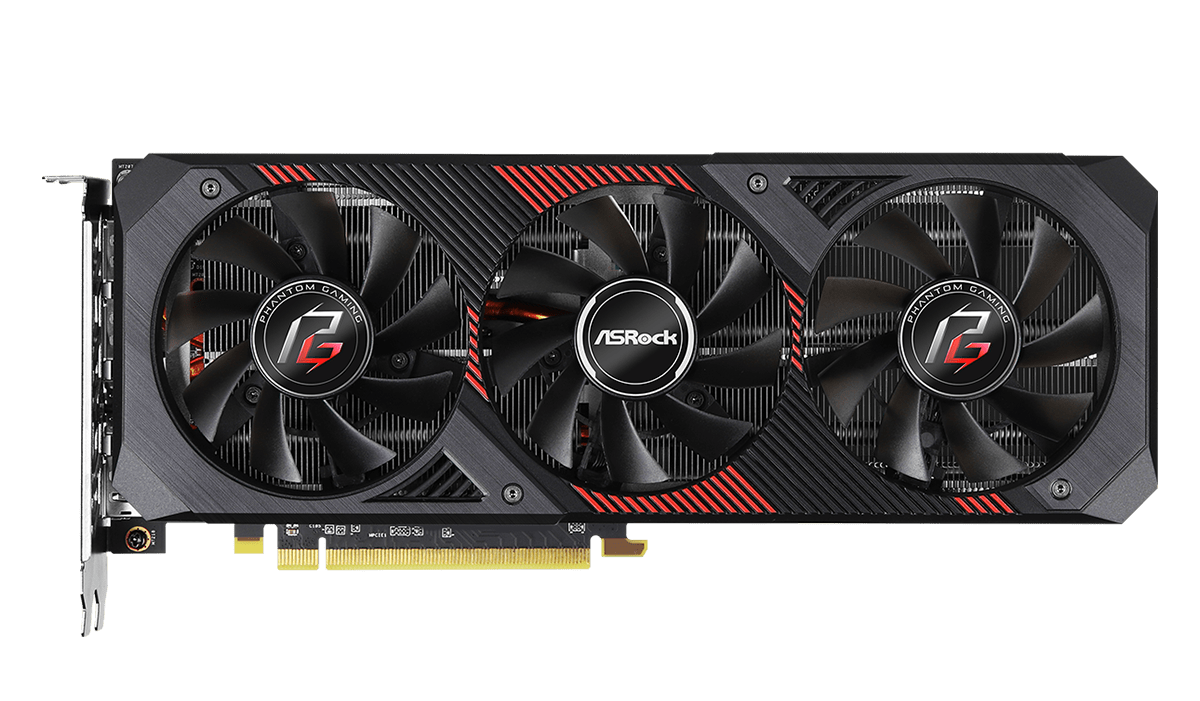Why you can trust Tom's Hardware
The ASRock RX 5600 XT Phantom Gaming D3 is the flagship RX 5600 XT in ASRock’s lineup. Of the three options, the D3 sports the largest cooler and fastest clock speeds. Priced at $309.99, it's $10 more than the Phantom Gaming D2 version (dual fans and a smaller heatsink), and $20 more than the Challenger D (also dual fans). The Gigabyte RX 5600 XT Gaming OC 6G is currently listed at $299.99, the least expensive of the bunch, while the Asus ROG Strix O6G Gaming is the most expensive at $339.99. Compare that with the $319.99 EVGA RTX 2060 KO Ultra and we see there is stiff competition in this part of the market.
The ASRock RX 5600 XT Phantom Gaming D3 proved to be a solid card offering users good performance, a quiet and effective triple-fan cooling solution, ample I/O and fair pricing. Looking at the $300 market in general, the elephant in AMD’s room is EVGA’s RTX 2060 KO and KO Ultra. All cards deliver a smooth gaming experience at 1080p ultra or 1440p medium settings, but only the Nvidia cards support hardware ray tracing and DLSS. We like having options like ray tracing, but practically speaking it's still not a must-have feature. If you're okay leaving ray tracing for a future hardware upgrade, when and if it becomes more meaningful, the ASRock Phantom Gaming D3 is a good all-around card
Between the RX 5600 XT cards we've tested, the Gigabyte Gaming OC and its 14 Gbps memory is the fastest of the bunch with the Asus the slowest, with the ASRock Phantom Gaming D3 effectively tied with the Asus. Note that our testing of the ASRock card occurred before the latest BIOS update with 14 Gbps memory support was released.
The problem with the Asus card is that the $30 premium performance likely isn't worth it considering the performance, unless you really like the aesthetics or Asus brand name. You'll probably have good luck overclocking the Asus card to 14 Gbps memory if you want the added performance, but it's not guaranteed. A far better bet is to get a card with official 14 Gbps support, which now includes the ASRock RX 5700 XT Phantom Gaming D3.
MORE: Best Graphics Cards
MORE: Desktop GPU Performance Hierarchy Table
MORE: All Graphics Content
Get Tom's Hardware's best news and in-depth reviews, straight to your inbox.

Joe Shields is a staff writer at Tom’s Hardware. He reviews motherboards and PC components.
